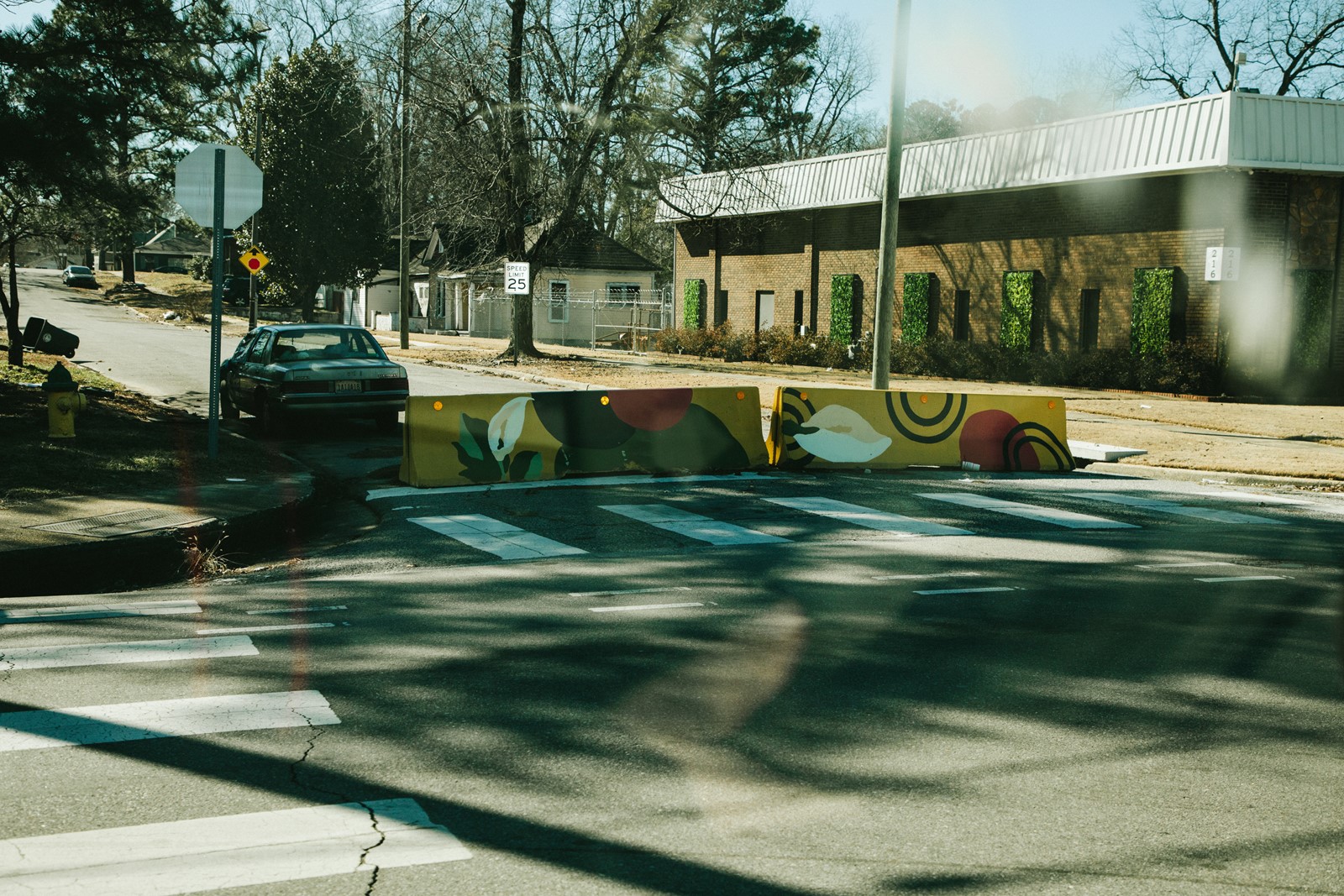
BIRMINGHAM, Ala. — Bullets had already punctured the porch steps of Mel Aaron’s home in the East Lake neighborhood of Birmingham, Alabama, one of the most violent cities in America. They had broken two windows. Once, they had narrowly darted past her teenage son’s head as he stood in the living room, again startled by the loud pops of a drive-by shooting.
So when she heard last July about the city’s new strategy to stem its escalating gun violence, she was optimistic. It involved placing large yellow concrete barriers around East Lake, blocking traffic and hopefully preventing drive-by shooters and getaway cars from entering. Maybe this, Aaron thought, would “help, do something, anything.”
But after six months, the barriers show just how hard it is to make a neighborhood feel safer — let alone be safer — and have become a symbol of Birmingham’s cycle of grief, outrage and, often, futility in the fight against gun violence.
“The thing about barriers: Bullets can fly over them,” said Annie Pearl, 80, who lives in the neighborhood of about 2,100 residents and is considering leaving her house because she cannot stand to look at “those ugly yellow things.”
Some residents praised how the initiative — which also placed more stop signs and speed bumps on some streets — had reduced speeding in East Lake and said they felt safer with them.
Many others, however, said they did not believe the barriers were effective in preventing shootings. They also said their commutes were now several minutes longer because the barriers had closed off 19 streets and alleys to traffic.
Birmingham had 151 homicides last year, breaking its previous record set in 1933 and bucking a nationwide trend of murder rates largely declining over the past two years.
Struggling schools, high levels of poverty and unemployment have persisted in Birmingham in recent years, creating ripe conditions for violent crime. And other factors have hurt the city, residents and local officials said, including police staffing shortages and Alabama’s permissive gun laws. That forces Birmingham, a majority Black Democratic city of about 197,000 residents, to find alternative ways to reduce violence.
But Adrienne Adams, 55, looked at the yellow barrier next to her house, wondering if this was the best solution her city could offer. It was decorated by a local artist with red polka dots and silhouettes of children, which made her think of her 17-year-old daughter, Adriana, and her 14-year-old son, E.J.
Their lives have been warped by gunfire, she said. Adriana had asked years ago if she could be home-schooled because too many classmates were getting caught up in spats that could escalate to violence. When her boyfriend recently called her, he could hear gunshots through the phone. E.J. has been forbidden from walking their dog outside.
Adams keeps two 9 mm pistols below her bed, in case of an intruder.
Violence back?
“You go to sleep, and your white noise is the gunshots,” Adriana said. And although the family initially thought the barriers were helping reduce the frequency of shootings, they now think the violence is back to what it was. They believe that bad actors have possibly learned new escape routes around the maze of barriers.
ShotSpotter, a gunshot detection technology, tracked 1,011 shots in 2023 in East Lake. That fell to 804 in 2024, according to the city. At a recent Birmingham City Council meeting, council members unanimously voted to indefinitely extend Project Safe Streets, the program that included the barriers. Some pointed to the ShotSpotter data as evidence the program was working and said that reducing speeding and traffic outweighed the inconvenience of longer commutes.
“By my observation, the overwhelming response has been positive,” said Darrell O’Quinn, the president of the City Council, whose district includes East Lake. “When I have heard complaints, it’s been from nonresidents, people who live in adjacent neighborhoods, who use those streets to pass through.”
But Bianca Young-Hendrix, who lives next to a barrier, said that shootings are continuing and that a minor dip may be tied to other factors like major drug busts.
“To me, it signifies, ‘As long as we put a good face on something, as long as I do it politely, you should just accept what we want to do,’ ” Young-Hendrix said. “I think that’s a history of how they’ve treated people of color in our country. And I’m not a fan.”
Ducking shots
Her wife, Rodquita Young-Hendrix, an Army Reserve veteran, said their family has made it a habit to duck from windows when shootings start. “I’ve actually heard more gunfire in this neighborhood than I did when I was deployed in Bagram,” she said, referring to the town in Afghanistan, where she served.
Mayor Randall Woodfin said the city is considering adding barriers to other parts of Birmingham.
But, he added, he was also eager to consider residents’ concerns, including installing more attractive barriers, such as heavy-duty bollards and guardrails.
He also noted that the city had knocked on hundreds of doors to get input before the project kicked off and that last fall, the council approved a nearly $ 16 million plan to recruit and retain police officers.“There has to be multiple tools,” said Woodfin, whose brother and nephew were killed in separate shootings several years ago. “There is no one solution.”
Other cities have tried road barriers to stem gun violence with mixed results. Jackson, Mississippi, had to stop its program after a lawsuit claimed that the roadblocks violated Black residents’ rights. But in Dayton, Ohio, and Charlotte, North Carolina, similar initiatives were credited with reducing violent crime.
East Lake residents describe their neighborhood as beautiful but broken, with rows of well-maintained homes sitting next to dilapidated ones.
Longtime residents in the neighborhood still remember when East Lake was mostly filled with white residents who worked in Birmingham’s steel industry before fleeing for the suburbs after integration began in the 1970s.


 PREVIOUS ARTICLE
PREVIOUS ARTICLE
